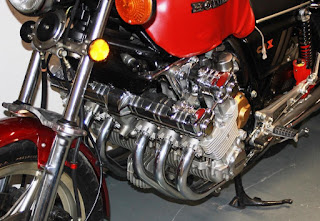 Returning to Formula 1 in 2015 will be different from Honda's first shot in the 1960s. A splendid record in motorcycle racing prompted Denis Jenkinson of Motor Sport : “The 4-cylinder Honda motorcycle made a big impression and its production sports and mopeds continued its good name in racing. But we must not forget that Honda racing motorcycles started inconspicuously and progressed as the seasons went by. They did not appear on the scene and win immediately.” Above: Celebrating Honda in Formula 1 at Goodwood, below CDX 6 cylinder 1047cc
Returning to Formula 1 in 2015 will be different from Honda's first shot in the 1960s. A splendid record in motorcycle racing prompted Denis Jenkinson of Motor Sport : “The 4-cylinder Honda motorcycle made a big impression and its production sports and mopeds continued its good name in racing. But we must not forget that Honda racing motorcycles started inconspicuously and progressed as the seasons went by. They did not appear on the scene and win immediately.” Above: Celebrating Honda in Formula 1 at Goodwood, below CDX 6 cylinder 1047cc
Jenkinson noted that Honda began on bikes by contesting classes where the opposition was weak, but this was not an option in Formula 1. Lotus, BRM, Brabham, Ferrari, and Coventry-Climax were well established. There was no weakness here and grand prix racing was full of team with recent world championships, such as Cooper. Even Porsche found it difficult to keep up, winning only once before pulling out at the end of 1965. Soichiro Honda radiated confidence in an interview with Günther Molter in 1962: “It is too early to talk of horsepower as the project is still at the development stage. Our grand prix car will have an engine performance unequalled by any of the others.”
Soichiro was up against V8s from BRM and Coventry-Climax, V6s, V8s, and flat12s from Ferrari, and an air-cooled flat8 from Porsche. Honda produced a radical little V12, with needle roller crankshaft bearings, revving to 11,500rpm. It was a jewel of an engine in a semi-monocoque chassis using suspension that owed something to Lotus and BRM, with tubular rear sub-frames and inboard springs. The transverse engine owed nothing to anybody however, and lived up to Soichiro's assurances with 20bhp (quite a big margin in 1962) more than any rivals, including the Ferrari flat12. The little V12 was a triumph for designer Tadashi Kume, a mechanical engineering graduate who had been assigned to racing motorcycle engines even though relatively inexperienced.
 1966 RC149
1966 RC149 “Nobody at Honda really expected the car to shatter the racing world at its first appearance but such was the publicity accrued from motorcycle racing that the grand prix car was preceded by almost fanatical expectations from Europe rather than Japan,” according to Jenkinson. The reason for established teams' apprehension was the proficiency Honda showed at high-revving engines with large numbers of small cylinders and four-valve heads. Ferrari was notably successful with V12s, and Coventry-Climax, also an acknowledged master of racing engines, had a 16-cylinder under development. Honda was half-expected to have a roller-bearing 16 of its own with prodigious power.
 John Surtees drive RA 300 at Goodwood.
John Surtees drive RA 300 at Goodwood.Jenkinson's admiration for Honda was not shared throughout Europe. Italians complained that Kume's masterpiece resembled an engine designed by Giulio Alfieri for Maserati in 1961, test-bedded in 1963, but only made public in 1964 following the Honda.
 1965 RA 262
1965 RA 262 Yet if the prevailing teams overestimated Honda's prospects, team manager Yoshio Nakamura probably underestimated. Honda's 1964 offensive lacked the refinement and style of its motorcycle racing department. The cars were a year late and never had the polished finish of a Lotus, nor the glamorous appearance of a Ferrari. It was 1965 before they gained a competitive edge, an achievement that had eluded Porsche, but given the expectations raised by the exquisite motorcycles, it was no less than expected.

1989 Brazil Grand Prix, Ayrton Senna McLaren Honda RA 109E

Your local parts store or pick and pull may also have them.
ReplyDeletehttp://www.qtccars.com/used-honda-cars.html